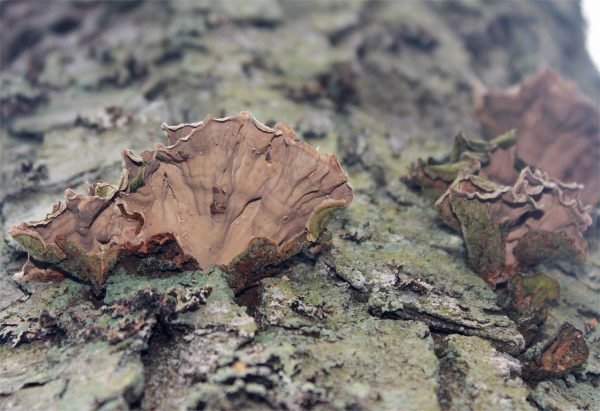Stereoum felt (Stereum subtomentosum)

Description
Fruiting bodies are annual, 1-2 mm thick, shell-shaped, fan-shaped or open-bent, up to 7 centimeters in diameter, attached to the substrate by the base, sometimes almost at one point. The place of attachment is thickened in the form of a tubercle. The edge is even or wavy, sometimes it can be divided into lobes. They usually grow in large numbers, arranged in tiled or rows. In rows, adjacent fruiting bodies can grow together with their sides, forming extended “frills”.
The upper side is velvety, felty, with a light edge and clear concentric stripes, covered with a green coating of epiphytic algae with age. The color varies from grayish orange to yellowish and reddish brown and even intense lingonberry, strongly dependent on age and weather conditions (old and dried specimens are duller).
The underside is smooth, matte, in older specimens it may be slightly radially wrinkled, faded, grayish-brown, with more or less pronounced concentric stripes (in wet weather, the stripes are more noticeable, in dry weather they practically disappear).
The fabric is thin, dense, hard, without much taste and smell.

Edibility
The mushroom is inedible due to the tough flesh.
Ecology and distribution
Widespread mushroom of the northern temperate zone. It grows on dead trunks and branches of deciduous trees, most often on alder. Growth period from summer to autumn (year-round in mild climates).
Similar species
Stereum hirsutum is distinguished by a hairy surface, a more yellow color scheme with less distinct stripes and a bright hymenophore.









